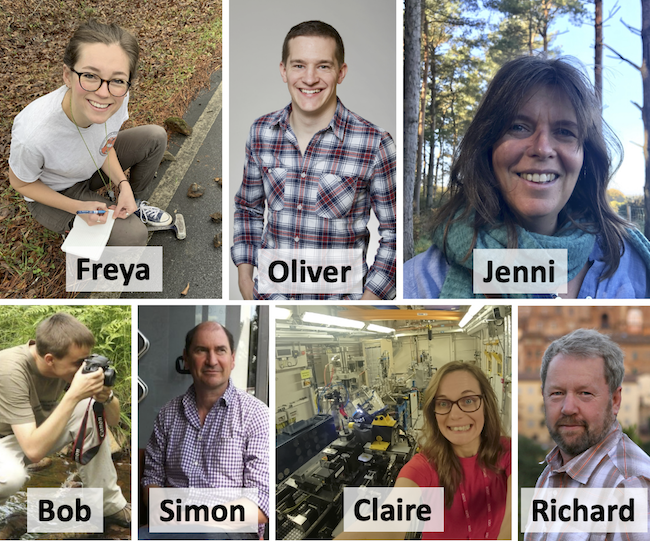People
 Research Highlights
Research Highlights
Hydrous silicate melts and the deep mantle H2O cycle
In situ observation of nanolite growth in volcanic melt: A driving force for explosive eruptions
The fate of carbonate in oceanic crust subducted into earth’s lower mantle
Structural Ordering in Liquid Gallium under Extreme Conditions
Slab melting as a barrier to deep carbon subduction
Generation of porphyry copper deposits by gas–brine reaction in volcanic arcs
Frequency and magnitude of volcanic eruptions controlled by magma injection and buoyancy
Linking Petrology and Seismology at an Active Volcano
Petrology Group members involved in €3.5m project to study processes behind volcanic unrest
Deep Mantle Cycling of Oceanic Crust: Evidence from Diamonds and their Mineral Inclusions
Petrology Group member Jon Blundy wins Royal Society Wolfson Merit Award
Primary carbonatite melt from deeply subducted oceanic crust
Petrology Group member Jon Blundy elected to Fellow of the Royal Society
Current members of the Petrology Group.
Academic staff
Professor Jenni Barclay
I am a volcanologist and the ambition at the centre of my research is the reduction of risk and prevention of disaster in volcanic settings. I aim to reduce the impact of volcanic eruptions on sustainable development trajectories. Volcanic risk is dynamic, multi-faceted and embedded within the social, political and cultural landscapes into which volcanoes erupt. So, my research focusses on both the fundamental physical understanding of volcanic processes, often using petrological methods, and on the integrative interdisciplinary research necessary to understand and tackle the core drivers of disaster losses.
Dr Richard Brooker
I manage the experimental petrology facilities, with projects ranging from planetary mantle petrology, crustal processes such as magma mushes through to volcanology, with a particular interest in the role of volatiles and more recently rheology. Other current research interests include ash damage in jet engines, survival of DNA and organic material during diagenesis and the environmental impact of mining ‘sulphide smoker’ deposits from mid-ocean ridges. I have a keen interest pushing experimental boundaries by designing new experimental equipment in close collaboration with our workshop.
Professor Claire Corkhill
I am a mineralogist interested in ancient uranium- and thorium-containing minerals, as well as glasses, which I use as templates to design new materials for radioactive waste immobilisation and disposal. I use a range of bulk and micro-focused X-ray techniques to probe the chemistry, local structure and crystallography of minerals, and couple these with surface-sensitive analytical techniques and aqueous geochemistry to understand their degradation in water.
Dr Freya George
My research works to understand rock metamorphism during tectonic processes in the Earth’s crust. I am particularly interested in understanding when, why, and how processes of mass transfer and mineral recrystallization occur, and how disequilibrium may accumulate in crustal systems. This research integrates a broad suite of spatially-resolved geochemical, isotopic, and microstructural approaches with fieldwork and numerical modelling.
Professor Simon Kohn
My research is aimed at understanding the materials that control large-scale processes in the Earth’s mantle and crust and includes volatile dissolution mechanisms in silicate melts and OH storage in nominally anhydrous minerals in the mantle. My current focus is on diamonds and their inclusions and the unique information they provide on global geochemical cycling and the history of the lithosphere.
Dr Oliver Lord Research Group Leader
I study the deep interior of the Earth by recreating its extreme pressures and temperatures in my home lab, at a variety of international synchrotron x-ray facilities and, more recently, inside supercomputers.
Dr Robert Myhill
I study the evolution and structure of the Earth and Mars through a combination of high-pressure experimental petrology, mineral physics, and geodynamics. I am particularly interested in where and how our planet melts, and in how melting over the last 4.5 billion years has led to the diverse geology of our planet. I am a principal developer of the BurnMan thermodynamics software (https://burnman.org) and ASPECT geodynamics software (https://aspect.geodynamics.org/).
Postdoctoral researchers
